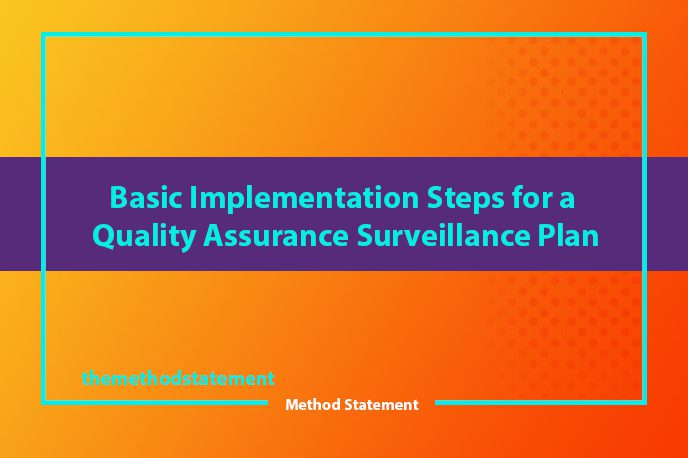Table of Contents
Implementation Steps for a Quality Assurance Surveillance Plan – QASP
An essential plan, the quality assurance surveillance plan, is intended to guarantee conformance to the performance statement of work.
Both the government entities and the clients benefit from this plan. Because QASP checks to see if the deliverables from contractors comply with the established standards. While granting the contract or as mentioned in the performance statement of work, QASP also ensures that all parties are in agreement.
This plan may be the foundation for an inspection before accepting delivery or it may be the basis for a series of routine or sporadic inspections.
The frequency of inspections, the standards that will be adhered to during inspections, and the quality requirements are all specified in detail when agreeing on this surveillance plan.
Stages of the Quality Assurance Surveillance Plan
Inspection of Processes, Products, or Services
This entails the inspection of the processes, products, or services provided by the contractors or subcontractors by representatives of the client or a government agency.
To understand how quality assurance systems are applied in organizations and how successful they are at delivering high-quality products, the complete technical and management processes are analyzed.
Adherence to Contract
The following stage in the QA surveillance plan is to check whether the products or services adhere to the quality levels and contract requirements. This is done after a thorough review of all systems, products, or services.
A non-conformance report is used to document any non-conformances that are found. Identify the root of the poor quality. Determine whether the issue is due to the contract’s fault or improper client or government communication.
Corrective Action – Various conversations are done to find the remedy, i.e. how the products or services can match the necessary standards, based on the inspection’s findings.
The products or services are then properly reworked to address all flaws, as determined, to bring them up to government standards.
Various Quality Assurance Surveillance Techniques
Random Inspections
The client may occasionally carry out a random inspection to make sure the contractor adheres to the proper protocols to guarantee quality.
For this purpose, the inspector may take random samples to check whether they meet the requirements or not.
The inspectors also adhere to rules for how to choose a random inspection lot, how to test for conformance, etc.
Scheduled Inspections
Some inspections are scheduled in advance with the contractor as part of the quality assurance surveillance plan.
The contractor is informed well in advance of the type of inspection that will be performed and how it will be done.
The ideal approach is to create a thorough inspection and testing plan.
The surveillance’s performance is evaluated in comparison to the benchmark specified in the performance worksheet.
Customer Inputs
Customer inputs are occasionally used as a surveillance method.
In this instance, the client solicits feedback from customers regarding the quality of the service offered by the contract and bases its evaluation of the contract on that feedback.
Customer complaints that are properly documented constitute a performance measure for contractors’ work.
100 Percent Inspection
Since it is an extremely expensive process, performing a 100% inspection of any work is quite uncommon. However, it becomes unavoidable in situations involving health and safety.
Conclusion
In conclusion, the quality assurance surveillance plan is the most crucial document in any contract work because it outlines all the requirements pertaining to the contractor’s deliverables.
It also clearly states the performance measurement method so that there is no misunderstanding later.
This ensures that there is less resource waste for all parties, including clients, contractors, and subcontractors.
tag: # Implementation Steps for a Quality Assurance Surveillance Plan
